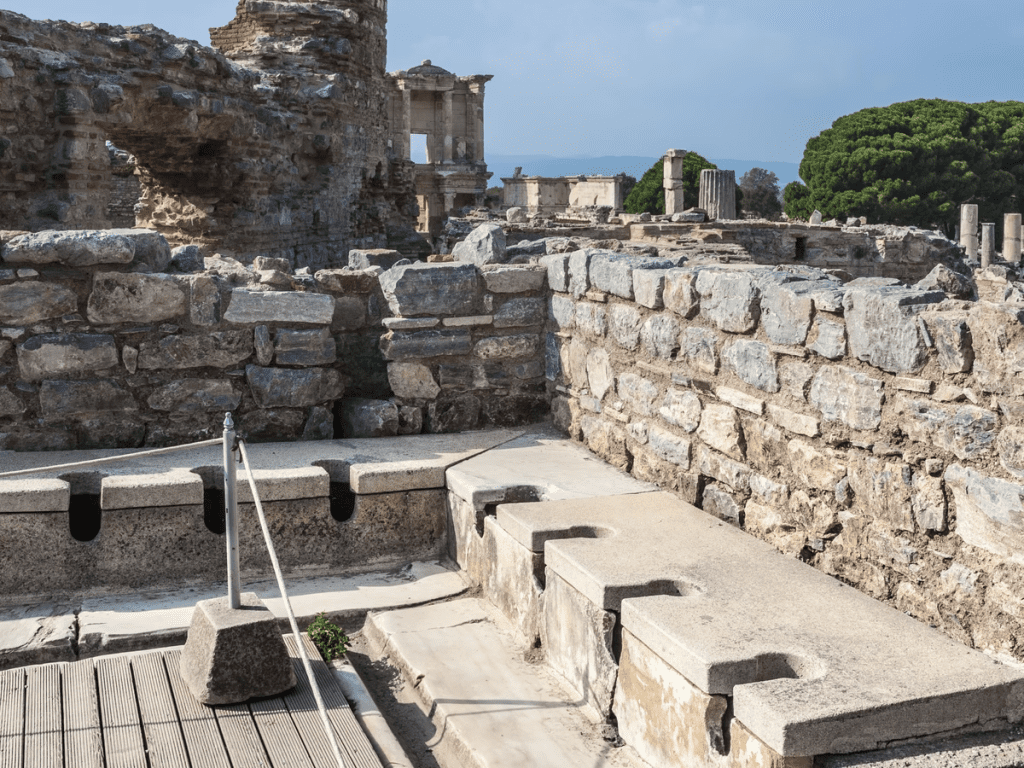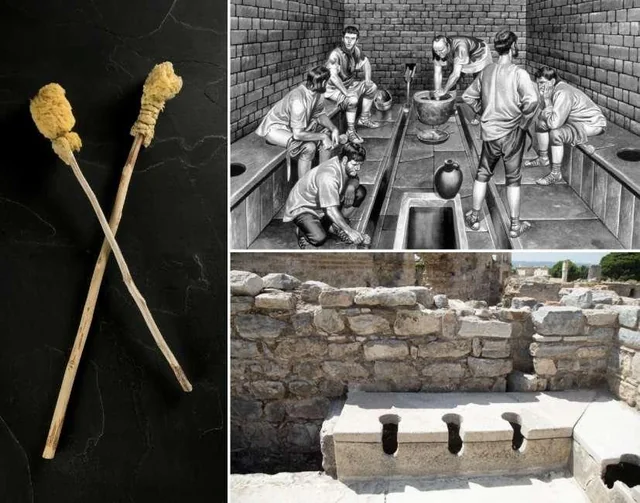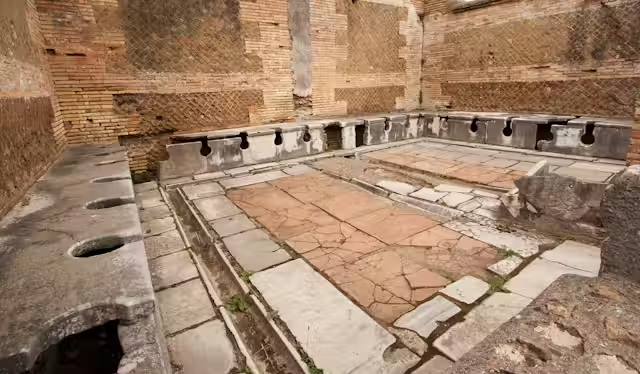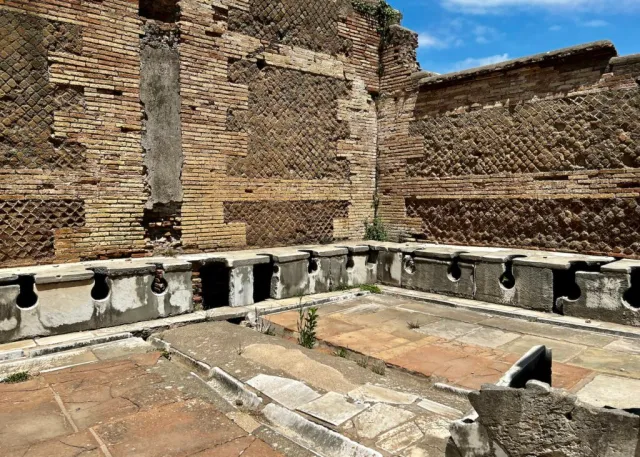We might take modern restrooms for granted, but in ancient Rome, going to the toilet was anything but a private moment. In fact, it was downright social.
Imagine walking into a beautifully tiled stone chamber, sitting shoulder-to-shoulder with your fellow citizens on cool marble benches no partitions, no flushing toilets, and definitely no “me time.” For the Romans, relieving yourself was just another opportunity to chat, swap gossip, and maybe even debate politics.

Toilets as the Original Watercooler
Public latrines weren’t hidden in back alleys or treated as taboo. Instead, they were central features of Roman cities, often located near bathhouses or forums. These communal spaces weren’t just about necessity they were about community.

People would come in, sit down, and get right into conversation. Whether it was local rumors, Senate scandals, or gladiator match predictions, the chatter flowed just as easily as the water beneath their feet. That’s right Roman latrines had running water systems that were remarkably advanced for their time.
Video:
Public Latrines in Ancient Rome
How the Engineering Worked
At first glance, ancient Roman toilets look like long stone benches with oval holes carved into them. But what made them so efficient and hygienic for the time was the engineering underneath.
Fresh water from aqueducts ran continuously through channels below the toilets, flushing waste away through an underground sewer system like the Cloaca Maxima in Rome. There was even a shallow water trough that ran in front of the benches. That was where people dipped their tersorium a communal sponge on a stick used instead of toilet paper.

Yes, you read that right: a shared sponge stick. After use, it was rinsed in the trough before being passed to the next person. By today’s standards, it sounds downright unsanitary. But in the context of ancient technology and understanding of germs, it was a clever workaround.
The Cultural Attitude Toward Toilets
Unlike many modern cultures that treat bathroom time as private and even awkward, Romans didn’t shy away from the subject. Bodily functions weren’t taboo they were simply part of life.
Public toilets were sometimes decorated with witty graffiti, jokes, and even artistic touches. Archaeologists have found tiles with humorous carvings, including satirical messages about politicians or exaggerated depictions of what went on in the latrine.
Video:
HORRIBLE HISTORIES – Roman Toilets – Subtitled
Some scholars believe that these open conversations helped reinforce social bonds and hierarchy. Wealthier citizens might have chosen the best spots or shown off their knowledge of current affairs. Others may have treated it like today’s coffee shop hangouts only with significantly more plumbing involved.
Lessons from the Past
While we likely won’t return to shoulder-to-shoulder bathroom chats anytime soon, there’s something refreshing about the Roman approach. They tackled hygiene with impressive engineering, embraced social interaction in all corners of life, and weren’t afraid to laugh at something we often hide behind closed doors.
Modern sanitation owes much to Roman ingenuity. Aqueducts, sewer systems, and even our basic ideas of public infrastructure have roots in their world. And while their sponge-on-a-stick solution might not be making a comeback, their openness about shared spaces just might have something to teach us.



